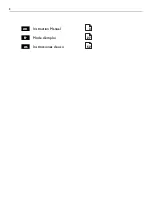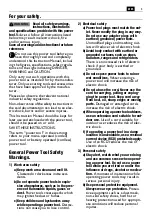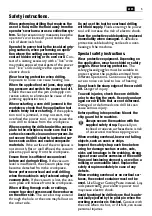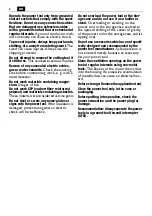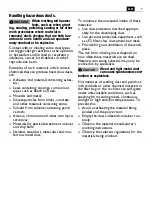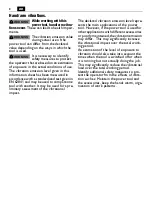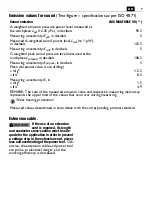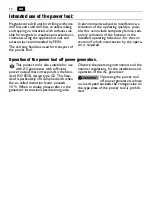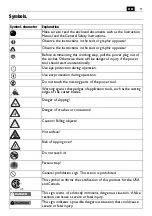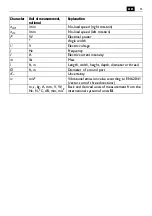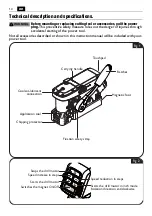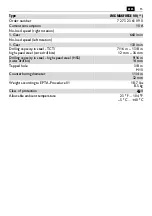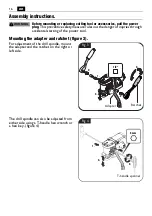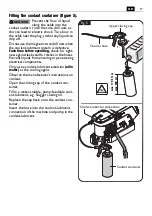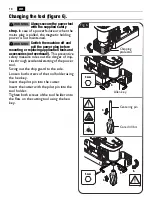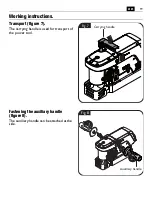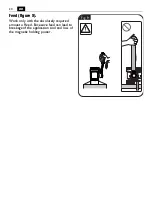
5
en
Safety instructions.
When performing drilling that requires the
use of a fluid, route the fluid away from the
operator’s work area or use a collection sys-
tem.
Such precautionary measures keep the
operator’s work area dry and reduce the
risk of electrical shock.
Operate the power tool by the insulated grip-
ping surfaces, when performing an opera-
tion where the cutting accessory may
contact hidden wiring or its own cord.
Con-
tact of a cutting accessory with a "live" wire
may make exposed metal parts of the power
tool "live" and could give the operator an
electric shock.
Wear hearing protection when drilling.
Exposure to noise can cause hearing loss.
When the application tool jams, stop apply-
ing pressure and switch the power tool off.
Check the cause of the jam and apply cor-
rective action to eliminate the cause of the
jamming application tool.
When restarting a core drill jammed in the
workpiece, check that the application tool
rotates freely before starting.
If the applica-
tion tool is jammed, it may not start, may
overload the power tool, or may cause the
core drill to release from the workpiece.
When securing the drill stand with a vacuum
plate to the workpiece, make sure that the
surface is smooth, clean and non-porous. Do
not secure the drill stand to laminated sur-
faces such as tiles and coated composite
materials.
If the surface of the workpiece is
not smooth, flat or well affixed, the vacuum
plate may pull away from the workpiece.
Ensure there is sufficient vacuum level
before and during drilling.
If the vacuum
level is insufficient, the vacuum plate may
become detached from the workpiece.
Never perform overhead and wall drilling
when the machine is only fastened using the
vacuum plate.
If the vacuum is lost, the vac-
uum plate will release from the workpiece.
When drilling through walls or ceilings,
ensure to protect persons and the work area
on the other side.
The core bit may extend
through the hole or the core may fall out on
the other side.
Do not use this tool for overhead drilling
with fluid supply.
Fluids entering the power
tool will increase the risk of electric shock.
Have the protective cable bushing replaced
immediately when damaged.
A defective
protective cable bushing can lead to over-
heating of the machine.
Special safety instructions.
Wear protective equipment. Depending on
the application, wear face shield or safety
goggles. Wear hearing protection.
The
safety glasses/goggles must be suitable to
protect against the particles emitted from
different operations. Continuous high expo-
sure to noise can lead to loss of hearing.
Do not touch the sharp edges of the core drill
bit.
Danger of injury.
To avoid injuries, check the core drill bits
prior to starting the work. Use only undam-
aged core drill bits that are not deformed.
Damaged or deformed core drill bits can
cause serious injury.
Before putting into operation: Mount the
chip guard to the machine.
Always secure the machine with the
supplied safety strap.
Especially on
inclined or uneven surfaces there is risk
of unsecured machines tipping over.
When working overhead, beware of falling
objects, such as cores or chips.
Inspect the safety strap each time before
using for damage such as cracks, cuts,
nicks and breakage in the webbing, strong
signs of wear and/or corrosion of the end fit-
tings and tensioning elements, as well as a
missing or unreadable label. Replace the
safety strap immediately in case of any
defects.
When working overhead or on vertical sur-
faces, the coolant container must not be
used.
Use Slugger Cutting Paste instead. Liq-
uids penetrating your electric power tool
maycause electric shock.
Avoid touching the drilled core that is auto-
matically ejected by the pilot pin when the
working procedure is finished.
Contact with
the core when it is hot, or if it falls, can cause
personal injuries.


